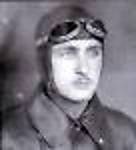Hello to the league of the extraordinary gentelmen! :-)
Fellow modelers.
I would like to have a question please.
Many of us replicate wood the well known "glaze style". We apply a proper base coat in dark yellow, flesh or radome to be followed by oil colors. With a brush, a sponge or any other suitable thing, we whipe these oils colors over the base coat to make our interiours, wing struts, rifle butts or even the entire fuselage most pleasing.
When we are done with oils we often face drying times from 3 days up to 5 or 7, depending on the thickness of the oil color coat.
Masking and sealing/decaling is not possible until this period has elapsed.
The question I have is:
Do you guys think it would be useful to have a drying agent, reducing the drying time down to 36-48hrs until the paintwork is touchable and ready to be selaed with clear? 36-48hrs until you can apply decal markings, masking stencils or even normal masking tape?
I would love to hear you thoughts on that.
Thanks in advance for your feedbacks!
very best regards
Alex
Early Aviation
Discuss World War I and the early years of aviation thru 1934.
Discuss World War I and the early years of aviation thru 1934.
Hosted by Jim Starkweather
Drying time of oil colors
USCHIvdROSTEN

Joined: December 11, 2010
KitMaker: 64 posts
AeroScale: 57 posts

Posted: Wednesday, October 26, 2011 - 10:48 PM UTC
Mecenas
Joined: December 23, 2007
KitMaker: 1,596 posts
AeroScale: 1,275 posts
KitMaker: 1,596 posts
AeroScale: 1,275 posts

Posted: Wednesday, October 26, 2011 - 11:16 PM UTC
Well Alex, if I'm in hurry or don't want to wait so long for drying I use other agents for thinning the oil paint like lighter gasoline (drying very fast, sometimes even to fast) or artists non-smelling turpentine.

edoardo

Joined: November 30, 2007
KitMaker: 642 posts
AeroScale: 382 posts

Posted: Wednesday, October 26, 2011 - 11:31 PM UTC
Hi Alex,
Well I too have my 'special' method, but it is VERY unconventional and a bit heretic, I think...
But it works for me (even if some care must be taken...).
Ok, now that I warned you, here what I do: after the oils for the wood grain I IMMEDIATELY spry a layer of Tamya clear yellow (or orange, depending on the effect I am looking for).
You still have to wait fot the acrilic to dry, but it is a metter of minutes, and than you can handle the model already! Believe me: it works!
Of course, since the oils are still wet, you should be careful if you have to mask the part you have just painted or if you have to remove a previusly laid mask, since a not careful removal of the tape could lead to the "peeling" of the part just painted.
When I paint the wood grain I usually paint a panel at the time - in an Albatross for instance - to remove the masking tape, in these cases I 'cut' with a scalpel around the tape in order to detach the acrilic cover and avoidithe peeling effect.
Have a look at the Albatross I did for the KotS Group build: it has been done the way I just described.
I hope this helps.
ciao
Edo
Well I too have my 'special' method, but it is VERY unconventional and a bit heretic, I think...
But it works for me (even if some care must be taken...).
Ok, now that I warned you, here what I do: after the oils for the wood grain I IMMEDIATELY spry a layer of Tamya clear yellow (or orange, depending on the effect I am looking for).
You still have to wait fot the acrilic to dry, but it is a metter of minutes, and than you can handle the model already! Believe me: it works!
Of course, since the oils are still wet, you should be careful if you have to mask the part you have just painted or if you have to remove a previusly laid mask, since a not careful removal of the tape could lead to the "peeling" of the part just painted.
When I paint the wood grain I usually paint a panel at the time - in an Albatross for instance - to remove the masking tape, in these cases I 'cut' with a scalpel around the tape in order to detach the acrilic cover and avoidithe peeling effect.
Have a look at the Albatross I did for the KotS Group build: it has been done the way I just described.
I hope this helps.
ciao
Edo

eseperic

Joined: November 06, 2009
KitMaker: 624 posts
AeroScale: 609 posts

Posted: Thursday, October 27, 2011 - 12:59 AM UTC
Hi Alex, and welcome on board! Since you worked with oils, you probably noticed that they can be quite tricky to work with. I find it helpful to first actually learn what is the exact material I intend to use, i.e. its chemical composition. We somehow tend to think that all oils are the same, which is wrong more often than not. Though I am no expert on oils, but there are certain mediums (depending on the actual producer of the paint) that are designed to reduce the drying time of oil colors. For instance, I have Winsor&Newton oils, and they have a product in their range, which is called "Liquin original"" or simply Liquin, which significantly reduces the drying time of conventional oil color (touch dry in 1-6 days depending on colour & film thickness). This may not satisfy you, but the first step is actually to learn the basic chemistry of a product, and than it's a bit easier to find its appropriate chemical chatalizer.
lcarroll

Joined: July 26, 2010
KitMaker: 1,032 posts
AeroScale: 1,025 posts

Posted: Thursday, October 27, 2011 - 01:49 AM UTC
Hi Alex,
Have you ever tried acrylics for the grain effect? I'm not real experienced at the technique however am very happy with the results I get starting with a dry basecoat of enamel and using a thinned down acrylic mix for the grain. Advantages are quick drying times (less then an hour to overcoat with clear yellow or orange etc) and, if you don't like what you get with the grain effect, you just wipe it off with water and try again. Check out the results on my KoTS Alb. DIII Build or the top panel on the Pup I"m still working on. I tried oils and , in addition to the pain of really long drying delays, I could not get results any better then with the acrylic method. Matter of personal preference for sure.
Cheers,
Lance
Have you ever tried acrylics for the grain effect? I'm not real experienced at the technique however am very happy with the results I get starting with a dry basecoat of enamel and using a thinned down acrylic mix for the grain. Advantages are quick drying times (less then an hour to overcoat with clear yellow or orange etc) and, if you don't like what you get with the grain effect, you just wipe it off with water and try again. Check out the results on my KoTS Alb. DIII Build or the top panel on the Pup I"m still working on. I tried oils and , in addition to the pain of really long drying delays, I could not get results any better then with the acrylic method. Matter of personal preference for sure.
Cheers,
Lance
eclarson

Joined: February 22, 2010
KitMaker: 171 posts
AeroScale: 166 posts

Posted: Thursday, October 27, 2011 - 02:33 AM UTC
Hi Alex,
When using oils, I mix in a small amount of Grumbacher Pale Drying Oil which reduces drying time but I still allow several days before handling. By applying some of the same mixture to a scrap piece, I can test for thorough drying by touch without the risk of marring the model. Once dry, a coat of Tamiya clear or tinted clear serves to further protect the finish. It's also a good idea to place the painted parts under a cover to shield them from dust while drying.
My understanding is that oil paints don't actually "dry" in the conventional sense. Rather, it is an oxidation process which can also be accelerated by careful application of heat over a period of time (such as a heat lamp).
I've experimented with other mediums for simulating wood grain yet have found nothing that works quite as well, for me, as oils. The most important thing is to not be in a hurry.
Here are a some pics of my most recent wood-finish model, an Eduard 1/48 OEFFAG Albatros.



Cheers,
Eric
When using oils, I mix in a small amount of Grumbacher Pale Drying Oil which reduces drying time but I still allow several days before handling. By applying some of the same mixture to a scrap piece, I can test for thorough drying by touch without the risk of marring the model. Once dry, a coat of Tamiya clear or tinted clear serves to further protect the finish. It's also a good idea to place the painted parts under a cover to shield them from dust while drying.
My understanding is that oil paints don't actually "dry" in the conventional sense. Rather, it is an oxidation process which can also be accelerated by careful application of heat over a period of time (such as a heat lamp).
I've experimented with other mediums for simulating wood grain yet have found nothing that works quite as well, for me, as oils. The most important thing is to not be in a hurry.
Here are a some pics of my most recent wood-finish model, an Eduard 1/48 OEFFAG Albatros.



Cheers,
Eric
USCHIvdROSTEN

Joined: December 11, 2010
KitMaker: 64 posts
AeroScale: 57 posts

Posted: Thursday, October 27, 2011 - 04:06 AM UTC
Thanks so much for the feedbacks!
Its very interesting to see all the opinions and consider all those.
Each one was worth reading and thinking about.
Thanks for that!
Yes, there might be some acrylic approaches and some of these looks really excellent, like the one of David Parker for instance. He has made a LVG, one of the first in the web and surely the first printed in a mag, (his own, Air Max Modeler) in early 2009, short after WNW was on the market.
What I did was adopting his technique and combine it with oils, which led to this one here:

Maybe i should mention that i run a lil project, called Uschi van der Rosten.
www.uschivdr.com
I ran a lot of test series in rendering wood grain. Handpainted, printed, coarse, fine, with oils, without...everything.
I have some media on my bench, so called "rapid dry medium" and "nussini" and stuff. Turpentine is the first and obvious thinner of course. I also tried some stuff from the carpenter shop, a so called "Turpentine balm" which smells most pleasing but does not accelerate the drying time. Also the rapid media are not very convincing, since these are supposed to support artists on their needs. Their needs may be a little aside from what we need, I think. The Schminke rapid dry medium saves you a day, maybe two, again depending on the thickness of the oil layer.
Lighter fluids or white spirits. Yes. Also quite obvious. A huge amount of what you find in a rapid drying medium bottle is white spirit. The term white spirit is not very accurate since this can be everything which is clear and volatile. It also can be a turpentine substitute or similar.
Schmicke also adds a alkyd resin. Thats what makes is solid after drying.
Again, what I won using these was approx 1 or 2 days. Quite disappointing since I expected more.
The reason why I ask this, is because my product manager for chemicals, Manfred Knoll Härter found something which is really darn fast. 36-48hrs are the numbers it works guaranteed. Actually it is faster on most of the cases.
Now I think about offering it since it makes perfect sense combined with our wood grain decals. At least with those which are ssupposed to be covered with oils. (Darker types of wood)
@Michal
Thanks for that! I have set up another test. If it is faster as what I have in my hands so there would be no need for a super dryer. Lets see what happen.
Thanks, man! Most constructive!
@edorado
Thats a nice Alba you have there!
I´m not sure if everyone can repeat the process as nice as you did.
There is a certain amount of uncontrollability on that system. I also tried this
on a test piece and all the paint work peeled off while masking.
You did very great on your project, its lovely! Might be dark, but it looks very pleasing. Congratulations!
@Entoni
Thanks buddy! Much appreciated!
@Lance
Well, I tested acrylics, but only in combination with oils. Somehow I like the certain depth they provide. If I had a choice, I always would opt for oils.
But, dear Lance, there is no doubt that the acrylic approach is alyways worth to have a look at. Definitely. Thanks chap! :-)
@Eric
Thanks so much for the pictures of your excellent model! It looks awesome indeed and the grain effects are very subtile and balanced. I love it! On the final pictures it looks very bright! I think thats one of the biggest challenges on a glaze job to get it balanced but bright.
May I ask what a color you have used as a base coat? Looks like "flesh" or "radome". One of your own compositions? Its really awesome!
Again, thanks evryone for getting involved. I really do appreciate that indeed,
Thanks!
Its very interesting to see all the opinions and consider all those.
Each one was worth reading and thinking about.
Thanks for that!
Yes, there might be some acrylic approaches and some of these looks really excellent, like the one of David Parker for instance. He has made a LVG, one of the first in the web and surely the first printed in a mag, (his own, Air Max Modeler) in early 2009, short after WNW was on the market.
What I did was adopting his technique and combine it with oils, which led to this one here:

Maybe i should mention that i run a lil project, called Uschi van der Rosten.
www.uschivdr.com
I ran a lot of test series in rendering wood grain. Handpainted, printed, coarse, fine, with oils, without...everything.
I have some media on my bench, so called "rapid dry medium" and "nussini" and stuff. Turpentine is the first and obvious thinner of course. I also tried some stuff from the carpenter shop, a so called "Turpentine balm" which smells most pleasing but does not accelerate the drying time. Also the rapid media are not very convincing, since these are supposed to support artists on their needs. Their needs may be a little aside from what we need, I think. The Schminke rapid dry medium saves you a day, maybe two, again depending on the thickness of the oil layer.
Lighter fluids or white spirits. Yes. Also quite obvious. A huge amount of what you find in a rapid drying medium bottle is white spirit. The term white spirit is not very accurate since this can be everything which is clear and volatile. It also can be a turpentine substitute or similar.
Schmicke also adds a alkyd resin. Thats what makes is solid after drying.
Again, what I won using these was approx 1 or 2 days. Quite disappointing since I expected more.
The reason why I ask this, is because my product manager for chemicals, Manfred Knoll Härter found something which is really darn fast. 36-48hrs are the numbers it works guaranteed. Actually it is faster on most of the cases.
Now I think about offering it since it makes perfect sense combined with our wood grain decals. At least with those which are ssupposed to be covered with oils. (Darker types of wood)
@Michal
Thanks for that! I have set up another test. If it is faster as what I have in my hands so there would be no need for a super dryer. Lets see what happen.
Thanks, man! Most constructive!
@edorado
Thats a nice Alba you have there!
I´m not sure if everyone can repeat the process as nice as you did.
There is a certain amount of uncontrollability on that system. I also tried this
on a test piece and all the paint work peeled off while masking.
You did very great on your project, its lovely! Might be dark, but it looks very pleasing. Congratulations!
@Entoni
Thanks buddy! Much appreciated!
@Lance
Well, I tested acrylics, but only in combination with oils. Somehow I like the certain depth they provide. If I had a choice, I always would opt for oils.
But, dear Lance, there is no doubt that the acrylic approach is alyways worth to have a look at. Definitely. Thanks chap! :-)
@Eric
Thanks so much for the pictures of your excellent model! It looks awesome indeed and the grain effects are very subtile and balanced. I love it! On the final pictures it looks very bright! I think thats one of the biggest challenges on a glaze job to get it balanced but bright.
May I ask what a color you have used as a base coat? Looks like "flesh" or "radome". One of your own compositions? Its really awesome!
Again, thanks evryone for getting involved. I really do appreciate that indeed,
Thanks!
nosewrit

Joined: November 30, 2007
KitMaker: 86 posts
AeroScale: 69 posts

Posted: Thursday, October 27, 2011 - 05:50 AM UTC
I can't speak from personal experience, but I've heard of squeezing some oil paint onto a paper towel and waiting awhile for the paper to absorb some of the oil. The paint with less oil is supposed to have a faster drying time....
Mecenas
Joined: December 23, 2007
KitMaker: 1,596 posts
AeroScale: 1,275 posts
KitMaker: 1,596 posts
AeroScale: 1,275 posts

Posted: Thursday, October 27, 2011 - 07:29 AM UTC
Quoted Text
@Michal
Thanks for that! I have set up another test. If it is faster as what I have in my hands so there would be no need for a super dryer. Lets see what happen.
Thanks, man! Most constructive!
My pleaseure. Just to clarify my techniqe: I use gasoline rather for light washes than painting woodgrain because it dries to quick to make the subtle effect of wood. You wouldn't be able to make any corrections of the painted wood structure. But as you asked about quick drying agents for oils it dries in just a few seconds

eclarson

Joined: February 22, 2010
KitMaker: 171 posts
AeroScale: 166 posts

Posted: Thursday, October 27, 2011 - 10:21 AM UTC
Quoted Text
@Eric
Thanks so much for the pictures of your excellent model! It looks awesome indeed and the grain effects are very subtile and balanced. I love it! On the final pictures it looks very bright! I think thats one of the biggest challenges on a glaze job to get it balanced but bright.
May I ask what a color you have used as a base coat? Looks like "flesh" or "radome". One of your own compositions? Its really awesome!
Alex,
Thank you for those very kind words. Tamiya paints were used for the base coats, in this case, if I remember correctly, XF-57 Buff, straight or lightened with white for some panels to give variation (which is barely noticeable).
By the way, this model was the subject of an article in the May 2011 issue of Airfix Model World which includes a page describing my wood grain technique.
The Albatros was only my second "wood" model (and third ever WWI build), my first efforts of a model requiring wood grain being, of all things, a Wingnut LVG! :-) Here are a some photos:



Cheers,
Eric

warreni

Joined: August 14, 2007
KitMaker: 5,926 posts
AeroScale: 2,201 posts

Posted: Thursday, October 27, 2011 - 10:56 AM UTC
I use Tamiya flat bases then Mig pigments to simulate the grain. Then I overcoat with Tamiya clear orange or just plain clear. Oils appear to be a bit too difficult for me to use....

JackFlash

Joined: January 25, 2004
KitMaker: 11,669 posts
AeroScale: 11,011 posts

Posted: Thursday, October 27, 2011 - 05:23 PM UTC
The term used to describe a dryer for artists oils is called "Jap Dryer". "Japan Dryer" is an additive used to accelerate the drying of oil based paint, enamels and varnish. 2 to 4 ounces treats 1 gallon. Not for use with synthetic finishes.
USCHIvdROSTEN

Joined: December 11, 2010
KitMaker: 64 posts
AeroScale: 57 posts

Posted: Saturday, October 29, 2011 - 11:39 PM UTC
@Stephen
Thanks for the input! I didn´t know that japanese stuff.
@Warren
thanks for the hint!
@Eric
Thats one great LVG you have there, Sir! I t h i n k this one was one of the inspirations and encouragements to do my one. Very nice!
Thanks for the color info!
@Michal
i ran that test with the lighter fluid. On washes: No doubt. Fast.
As for what we have here it was a lil like you spill some fuel on the
floor while refueling your car. The fluid it self vaporizes and there is only some
oil on the floor after a few hours.
It caused something in terms of speed, but that was about 5% acceleration on
my test layout. There is some more potencial, I guess.
Thanks again for getting invloved!
@Matthew
True! I However it affects the painting properties. Maybe that can be compensated with turpentine. I guess i should make another test layout.
Thanks!
Thanks everyone for the constructive feedbacks!
Very interesting, educating and truly appeciated!
Cheers guys! :-)
Thanks for the input! I didn´t know that japanese stuff.
@Warren
thanks for the hint!
@Eric
Thats one great LVG you have there, Sir! I t h i n k this one was one of the inspirations and encouragements to do my one. Very nice!
Thanks for the color info!
@Michal
i ran that test with the lighter fluid. On washes: No doubt. Fast.
As for what we have here it was a lil like you spill some fuel on the
floor while refueling your car. The fluid it self vaporizes and there is only some
oil on the floor after a few hours.
It caused something in terms of speed, but that was about 5% acceleration on
my test layout. There is some more potencial, I guess.
Thanks again for getting invloved!
@Matthew
True! I However it affects the painting properties. Maybe that can be compensated with turpentine. I guess i should make another test layout.
Thanks!
Thanks everyone for the constructive feedbacks!
Very interesting, educating and truly appeciated!
Cheers guys! :-)
ludwig113

Joined: February 05, 2008
KitMaker: 1,381 posts
AeroScale: 1,110 posts

Posted: Saturday, October 29, 2011 - 11:47 PM UTC
i use liquin original from windsor and newton mixed in with the oils.
i'll usually leave it for about a day before seeing if the oils have dried and just to be on the safe side i wont try any overcoat for 48 hours.
paul
i'll usually leave it for about a day before seeing if the oils have dried and just to be on the safe side i wont try any overcoat for 48 hours.
paul
the_kid

Joined: October 21, 2011
KitMaker: 5 posts
AeroScale: 4 posts

Posted: Sunday, October 30, 2011 - 02:03 PM UTC
whatever you fellas do DON'T MESS WITH HEATLAMPS!!!! I have spent almost a year on my Roden Albatros D.III OAW, and was so close to showing it off here on this forum as my first post... then i took some bad advice and put my little gem under a heat lamp for no more than a minute, and came back to a grey/woodish pile of twisted contorted goo... this happened TODAY, and i was just talking about how proud i was that i had undertook what mr. kornbeef went through to accurize the interior of the bird, as well as updating the mercedes engine to the correct mark, and now it all went out the window in under a minute.. just please, don't play with heatlamps kiddies! (and if anyone has some "leftover" albatros d.iii oaw fuselage halves they'd part with, holler at me!!)
 |






